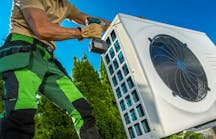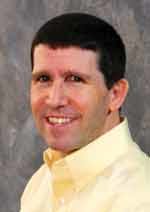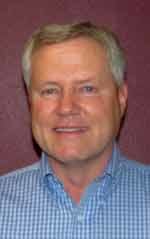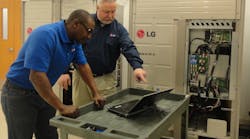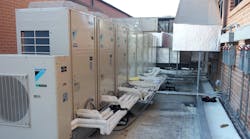Latest from Residential HVAC
Quiz: Refrigerant Recovery & Evacuation (Continued)
Jarboes Provides HVAC System to Local Teacher
The technology in every industry evolves, but variable-refrigerant-flow (VRF) and inverter motor technology may represent more of a revolution than an evolution in the HVAC industry. As contractor Blaine Aldrich, president and owner, Comfort Service Inc., DeLand, FL, says, “I always thought if they ever made a variable indoor unit with a variable outdoor unit that it would revolutionize our industry.”
Well that technology has arrived. ContractingBusiness.com spoke with some of the major players in the VRF and inverter-motor space to find out what this revolutionary technology will mean for HVAC contractors and their customers.
ContractingBusiness.com: VRF has (so far) been a high-end “premium” technology. Is the trend now for it to move into the upper/middle range of “everyday” technology, such as residential split systems?
Recent advances in VRF technology deliver ever-increasing efficiency, flexibility of application, quiet operation, and comfort levels that were unavailable just a few short years ago. The multitude of benefits makes VRF systems the preferable choice. VRF systems have a very low lifecycle cost compared to other systems on the market today, and the advanced yet simple design enables improved energy efficiency by matching heating or cooling loads independently in different zones. Furthermore, supporting numerous indoor units allows more zones to be covered on a single system, reducing installed costs. Over time, unit costs will come down as volume increases.
Tim Storm, product manager — heat pump, Trane: Yes, we do anticipate that variable-speed compressor technology may trickle down and could eventually replace some two-stage high efficiency systems if the cost of variable-speed components comes down over time. In fact that is part of our current market strategy with our new Trane TruComfort variable-speed systems: offering variable-speed 18 and 20 SEER alternatives of our two-stage 18 and 20 SEER air conditioners and heat pumps at the most affordable cost possible, then going after the even higher efficiency levels as we continue to build on that platform.
CB: What will this new technology mean for contractors? What advice would you give them on successfully selling/installing/servicing this equipment?
Emmerich: Proper training will be a key to success with VRF products. Not only will it be important to learn about the equipment on the mechanical side, but it will also be paramount to develop a strong understanding of the controls, software tools and best practices necessary to optimize a VRF system.
Zipfel: Today, we’re seeing VRF systems not only become the more preferable everyday technology, but also starting to meet higher efficiencies such as Energy Star requirements. With improved products and efficiencies, comes evolved methods used to service and troubleshoot these systems. LG Electronics offers services and classes that we always recommend in order to provide faster and correct installations.
Long-term efficiency, comfort, and reliability start with proper installation of the equipment, and we have a few pieces of advice to share with contractors:
• Three installation steps. Follow the designed system layout, wire per written specifications, and keep the piping clean, dry, and tight. While these three steps sound basic, they are the cornerstone to long-term reliability, efficiency, and comfort.
• System start-up. Once the system is properly installed, the next step is to provide a proper system start up. Nearly all system setup can be accomplished through simple remote programming. Onboard logic at the outdoor unit combined with sensors throughout the piping system allows the majority of the system startup to be accomplished from a central location, with far fewer tools and instruments than needed with conventional systems.
• Servicing. Each major VRF manufacturer provides a service and commissioning tool that is typically PC-based. By connecting the proprietary software program to the outdoor unit, a complete system evaluation can be obtained to include refrigerant pressures, electrical component information, inverter frequency, various temperatures throughout the system, and dozens of other data points.
• Maintenance. The VRF system has built in diagnostics that provide readouts at local controllers and are visible to the homeowner. This allows the homeowner to provide initial information, such as an error code, to the service provider. This unique diagnostic ability allows the service provider to begin troubleshooting the issue before he ever arrives onsite.
Storm: Trane offers two SEER levels (18 and 20 SEER) and price points of fully variable-speed systems that our dealers can offer homeowners before they have to back down to an industry standard two-stage type system. The beauty of variable-speed is that it can precisely match the heat loss or gain load on the home 24 hours a day. The technology allows the compressor speed to vary in increments as small as one-tenth of one percent. This means that Trane dealers can explain to homeowners, “Having a TruComfort variable-speed system is like having 700 units in your back yard” and only the one that is needed at that particular moment to maintain your thermostat setting is going to run. This will allow precise control of the indoor temperature and humidity at the quietest and most economical operating speed while providing unmatched comfort.”
We created online sales training and videos for our distributors and dealers to learn how to sell, install, and service TruComfort systems. We launched the product to our Trane Comfort Specialist dealers so that we could focus on getting our premium dealers trained first. All dealers who sell variable-speed technology should be properly trained prior to selling or installing to ensure they can not only support after the sale, but that the customer is getting the installed comfort and efficiency that he or she purchased.
A Contractor’s Perspective
Blaine Aldrich, president and owner, Comfort Service Inc., DeLand, FL.
Blaine Aldrich started in the HVAC industry as a helper 28 years ago, and in nearly three decades has seen many new technologies arrive on the scene. Yet, he says, few have been as exciting as variable-refrigerant flow (VRF) and inverter motor technology.
VRF and inverter motor technology is already in the mini-split systems many people are buying for their homes, and I think it won’t be long before it’s the standard in traditional residential split systems. Stated simply, inverter technology takes a single-speed compressor and makes it function as a variable-speed compressor. For example, you might have a two-ton compressor in a single-speed unit. Inverter technology enables that compressor to ramp down as low as 14%, or as high as 130%. That’s a big advantage over a traditional single-speed compressor that is either on or off.
It’s like driving a car down the highway. Imagine you’re driving 60 mph on a highway and then you come into town, but you can’t slow down, you can only shut the car off. And then, when you start it back up it immediately starts going 60 again. That’s exactly what we have traditionally done with our air conditioning units. Inverter technology gives us a “gas pedal” to control the compressor’s speed.
Units with inverter technology do a better job of maintaining a consistent temperature: if you set your thermostat at 72, your house is going to stay 72 instead of bouncing up and down between 70 and 74. They also have longer run times, which is very effective here in Florida because longer run times remove more humidity. Longer run times also help units last longer, as it’s the starting of the units that destroys them. Starting a unit uses most of the power and does most of the damage.
VRF is making a mark in the residential market, but I see huge possibilities for it in the commercial market. Commercial buildings use much more power than homes, so they could really benefit from the energy savings. I look around at municipal buildings and churches and some high-rise buildings, and I think they’re foolish not to invest their money in VRF. The units last longer, they get a much better return on their investment, and it helps keep the bills down for their tenants.
We have an assisted living center here in DeLand that has all wall PTACs, and I lay awake at night thinking how much more efficient it would be if they had VRF units. They could take that money that they’re putting toward the energy bill and put it to better use for the residents.
Obviously, I’m sold on this technology. When I was a helper many years ago, I always thought if they ever made a variable indoor unit with a variable outdoor unit that it would revolutionize our industry. Now it’s here and the word is getting out. We’ve had more and more people asking us about them. I see the VRF and inverter technology as a win-win for everybody, especially here in Florida.
